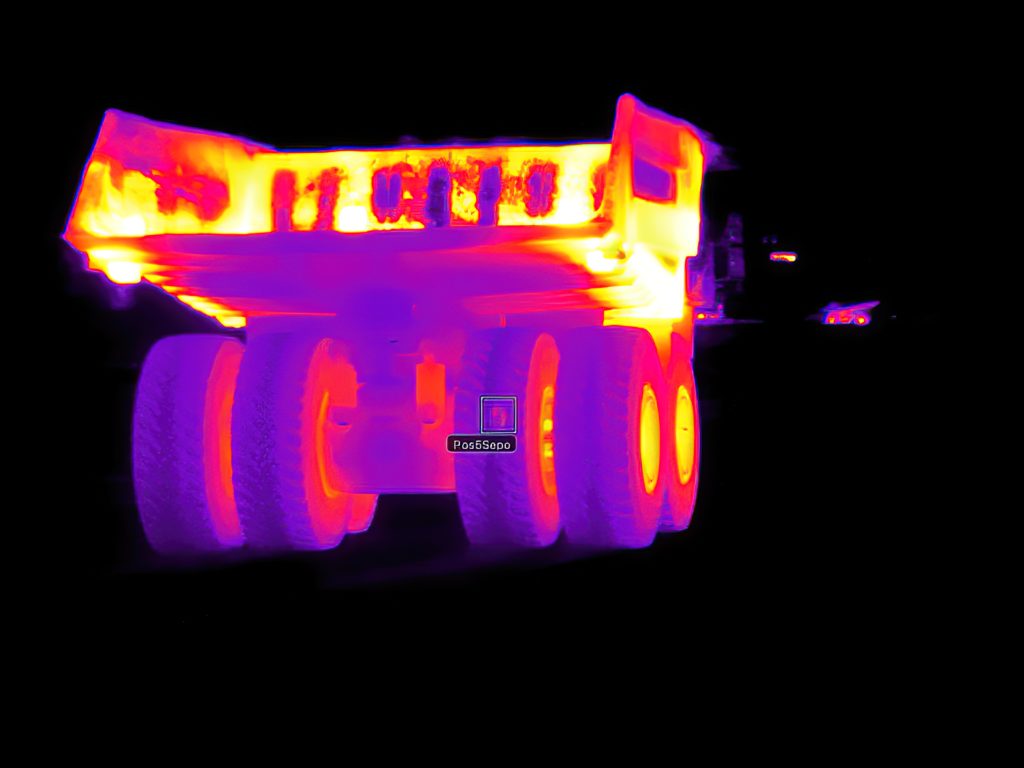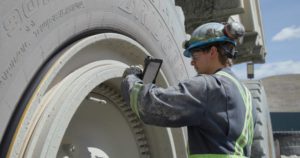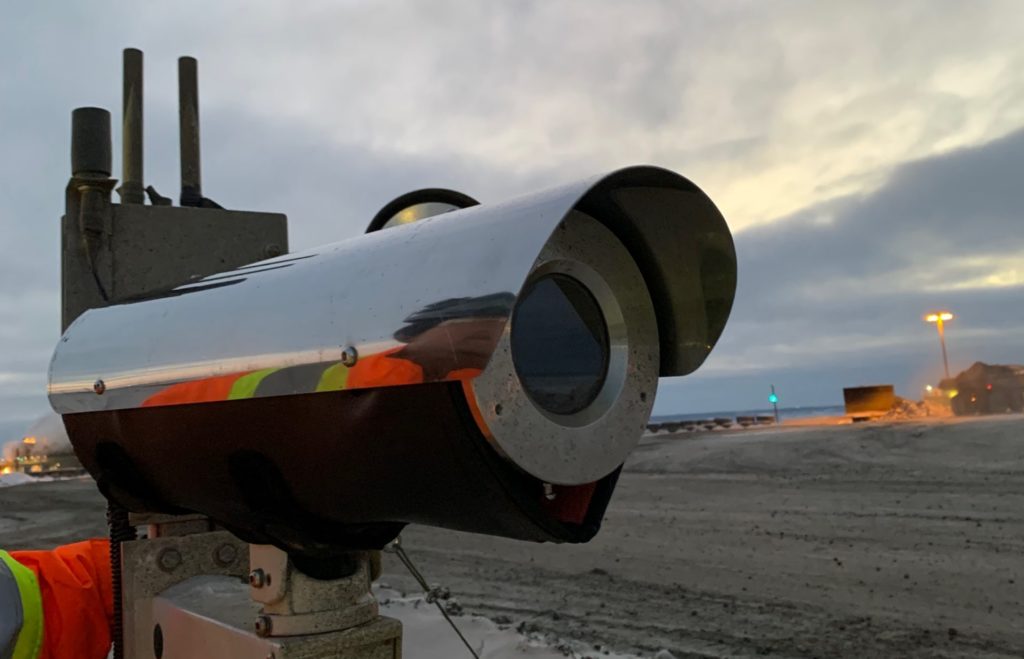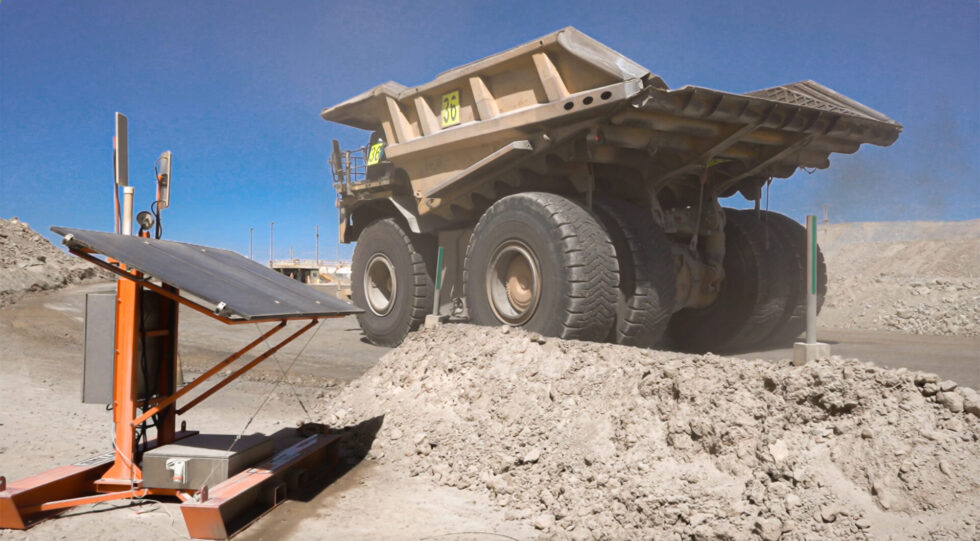Kal Tire’s Mining Tire Group
Mining companies around the world rely on Kal Tire’s Mining Tire Group for mining tyre management and supply. Over the last five decades, Kal Tire has grown to a team of more than 2,700 people serving more than 150 mine sites across five continents. With that breadth of expertise across commodities and conditions, and innovation in tooling, processes and safety, Kal Tire focuses on helping customers achieve their goals and maximise their tyre investment. By investing in tyre management technology, sustainable solutions and highly skilled teams, Kal Tire helps solve miners’ evolving challenges and provides measurable value at every stage of tyre life. Some unique Kal Tire solutions making an impact include its Tire & Operations Management System (TOMS) Ultra Repair, a thermal conversion recycling facility, six world-class retreading facilities, and a new Maple Program and verified carbon calculator so customers can earn recognition for the emissions saved by retreading.
Nearly two years after Kal Tire’s Mining Tire Group launched its autonomous tyre inspection stations, what are the operational benefits customers are seeing from this integrated, AI-driven tyre management solution – and what’s next for the technology?
 Every week at a copper mine in the Antofagasta region of Chile, Kal Tire’s autonomous tyre inspection stations inspect nearly 200 tyres on 33 passing haul trucks. The thermal imaging camera installed in one of the haul roads leading to a fuel bullet records the truck’s tyres and sends information to Pitcrew.ai software. The AI-powered process scans the footage for signs of tyre-related issues, such as hot tyres and tread damage. Those inspection anomalies are processed in TOMS™, Kal Tire’s proprietary Tire & Operations Management System and, depending on a customer’s goals, work orders are automatically released to plan and schedule tyre work, such as tyre replacements or repairs, at times when trucks might already be down for other work.
Every week at a copper mine in the Antofagasta region of Chile, Kal Tire’s autonomous tyre inspection stations inspect nearly 200 tyres on 33 passing haul trucks. The thermal imaging camera installed in one of the haul roads leading to a fuel bullet records the truck’s tyres and sends information to Pitcrew.ai software. The AI-powered process scans the footage for signs of tyre-related issues, such as hot tyres and tread damage. Those inspection anomalies are processed in TOMS™, Kal Tire’s proprietary Tire & Operations Management System and, depending on a customer’s goals, work orders are automatically released to plan and schedule tyre work, such as tyre replacements or repairs, at times when trucks might already be down for other work.
In those mere minutes and the minutes that follow, the AI-driven tyre management solution enables actions and decisions that enhance fleet productivity and safety – just as Kal Tire had hoped.
Nearly two years after its first autonomous tyre inspection station was deployed in Canada, the company points to the integration factor as the source of such strong early results.
“It’s not just one aspect of the platform, but the integration of several technologies into the TOMS platform that allows for a more efficient, reliable, and safe tyre management process that addresses distinct challenges and delivers cost savings,” Christian Erdelyi, Manager, Mining Technology Solutions, says.
Addressing site-specific challenges
Even though the company was an early adopter of a new solution for mine sites, it embraced realistic targets to ensure the technology would add value and enable better operational decisions. At one customer’s mine, the site-specific ‘six problems to solve’ were:
- Reduce downtime for inspections;
- Report and review all new tyre damage within 48 hours;
- Reduce technician exposure hours to trucks;
- Increase tyre life by identifying tyres for repair
- Reduce truck isolation time for hot tyre events to zero hours; and
- Condition monitor trucks with damaged tyres.
Those are the challenges the autonomous tyre inspection stations and technology can solve, and now that a handful are running in North and South America, with several more being deployed, Erdelyi says they’ve discovered an important learning:
“We’ve found that it’s helpful to determine with the customer that one challenge we want to focus on solving, whether that’s tyre performance or productivity, or sending an agreed upon number of tyres in every month for repair, or reducing the amount of time technicians spend in proximity to the equipment as part of inspections to improve safety.”
 Zooming in on that one great challenge to overcome is necessary because of the technology. Site-specific business use cases are set up to match capacity and priorities, with TOMS filtering ‘noise’ and flagging valid concerns.
Zooming in on that one great challenge to overcome is necessary because of the technology. Site-specific business use cases are set up to match capacity and priorities, with TOMS filtering ‘noise’ and flagging valid concerns.
“That business rule engine allows for those specifics, like the age of the tyre, to be taken into consideration and make calls that support each site’s challenges. TOMS might pick up a sign of the need for repairs, but it also knows the age of the tyre and makes decisions based on how much tyre life is remaining and how the customer prioritises tyre life or fleet use. If the tyre is at 80% of its life, there might be a different step than if signs of repair were showing at 40% tyre life.”
At the Chilean site where 33 trucks are now scanned remotely by the station’s thermal imaging cameras, the customer’s goals were to improve productivity and eliminate risk by reducing the need for manual inspections on trucks that have no sign of tyre damage.
Before, each of those trucks would’ve had to stop for nearly 30 minutes of inspection every week. Now, trucks don’t even need to stop for maintenance teams to be alerted about signs of potential tyre damage and high temperatures – leading to significant improvements in fleet use.
Zooming in on that one great challenge to overcome is necessary because of the technology. Site-specific business use cases are set up to match capacity and priorities, with TOMS filtering ‘noise’ and flagging valid concerns.
“That business rule engine allows for those specifics, like the age of the tyre, to be taken into consideration and make calls that support each site’s challenges. TOMS might pick up a sign of the need for repairs, but it also knows the age of the tyre and makes decisions based on how much tyre life is remaining and how the customer prioritises tyre life or fleet use. If the tyre is at 80% of its life, there might be a different step than if signs of repair were showing at 40% tyre life.”
At the Chilean site where 33 trucks are now scanned remotely by the station’s thermal imaging cameras, the customer’s goals were to improve productivity and eliminate risk by reducing the need for manual inspections on trucks that have no sign of tyre damage.
Before, each of those trucks would’ve had to stop for nearly 30 minutes of inspection every week. Now, trucks don’t even need to stop for maintenance teams to be alerted about signs of potential tyre damage and high temperatures – leading to significant improvements in fleet use.


System integration is key
Kal Tire’s TOMS system is able to uniquely boost the efficiency and safety of mining tyre management teams because of the integration of various systems commonly found on mine sites.
Tyre pressure and internal temperature data from multiple TPMS (Tire Pressure Monitoring Systems) are now incorporated into TOMS. Typically, this information is collected manually during weekly truck inspections. A trial conducted at a mine site in British Columbia, Canada, demonstrated that automating the pressure collection process reduced inspection time by 40%. This time-saving measure allows technicians to focus on their core responsibilities, such as ensuring the safe operation of trucks. Additionally, it minimises the technicians’ exposure to heavy equipment by reducing the time they spend near the trucks.
The integrated systems streamline tyre management processes, ensuring an effective and dependable method for maintenance tasks, leading to increased productivity. TOMS addresses two key areas of tyre management: tyre fitment and visual inspection. TOMS.ai-driven tyre fitment processes predict tyre replacement times, allowing for better demand forecasting at customer sites and optimising fleet availability and tyre utilisation. Pitcrew.ai-driven visual inspection, combined with TPMS sensor integration, proactively identifies tyre issues and generates work orders to improve site productivity and safety.
The combination of Pitcrew.ai, TPMS and TOMS.ai in Kal Tire’s Enterprise Asset Management (EAM) system provides a more efficient and reliable tyre management process that addresses the mining industry’s distinct challenges while delivering improvements in cost savings, planning and safety.
The future of autonomous tyre inspections
The first autonomous cold weather tyre inspection station was ‘version 1.0’ and the platform has evolved from that first prototype to version 4.5 as Kal Tire and Pitcrew.ai continue to innovate so customers see the greatest benefit across mine site conditions and climates.
Looking ahead, Kal Tire plans to introduce more productivity-enhancing features, such as AI-driven work order demand planning and automated work order generation for truck and tyre conditions, using IoT data gathered from various systems on mine sites.
“We’re focusing on how to help customers get the most value out of the autonomous tyre inspection stations and the TOMS integration with other systems so customers truly have a 360-degree overview of what’s happening both inside and outside their truck tyres,” Erdelyi says. “This will continue to lead to better inspection results, planning and work aggregation. We’re hitting those KPIs and the problems we wanted to solve.”







